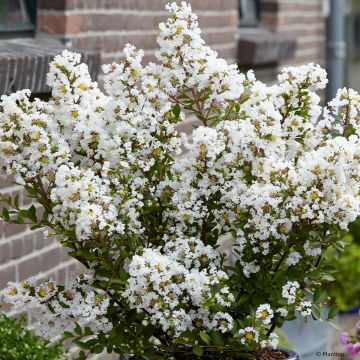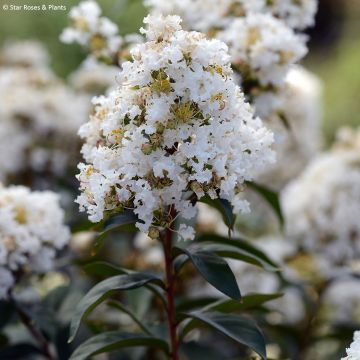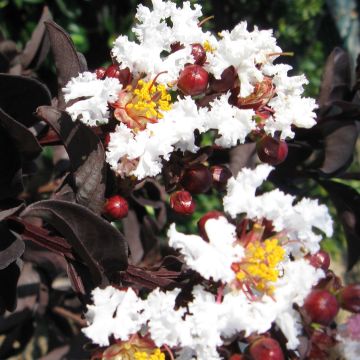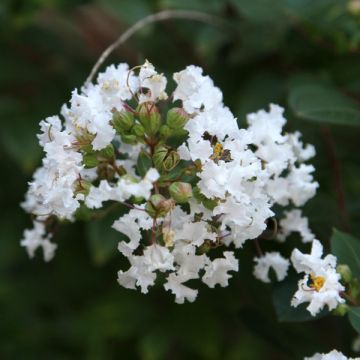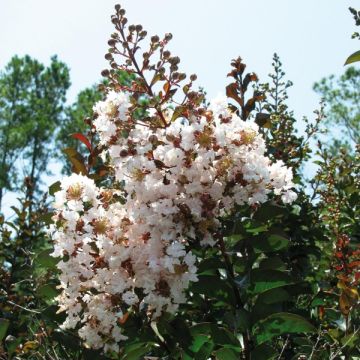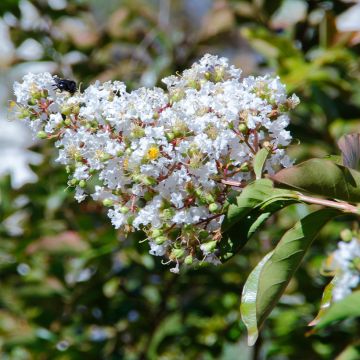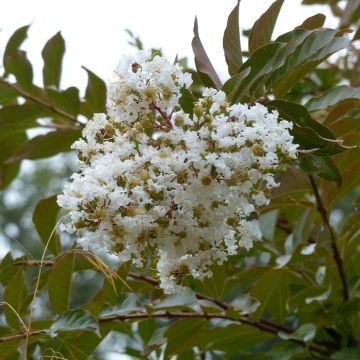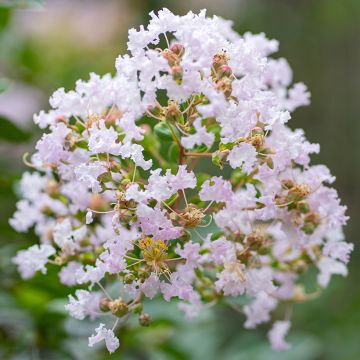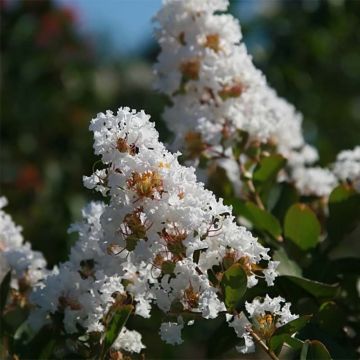White Crape Myrtle
Does this plant fit my garden? Set up your Plantfit profile →
Available in 3 sizes
Available in 1 sizes
Available in 1 sizes
Available in 2 sizes
Available in 1 sizes
Available in 1 sizes
Available in 1 sizes
Available in 1 sizes
Available in 1 sizes
Available in 1 sizes
White Crape Myrtles appear covered in snow in the middle of summer, like the famous and magnificent 'Neige d'Eté' Lagerstroemia, covered in frothy panicles of silvery white. White is a much less common colour for this bush, which is usually pink or red, but also easier to blend in with the garden. In Lagerstroemia, the shades of white can be more or less pure ('Virgin Wth Love'), sometimes approaching pink, in 'La Fayette' for example. Depending on the variety, the white crape myrtle forms a small tree capable of reaching 4-5 m (13-16ft) in height and 3 m (10ft) in width. For small gardens and container cultivation, the choice is now vast, like 'Pixie White'. Some white varieties also have remarkably coloured foliage, very dark, like 'Black Solitaire (Black Diamond) Pure White' which forms a striking contrast with the flowers. Young lagerstroemia plants must be protected from the cold. These bushes generally have a bushy habit, growing in clumps, but they can easily be shaped by pruning to form a small tree or on a single trunk. In addition to its sumptuous summer flowering, the Crape Myrtle offers beautiful autumn foliage and decorative bark.
Haven't found what you were looking for?







































